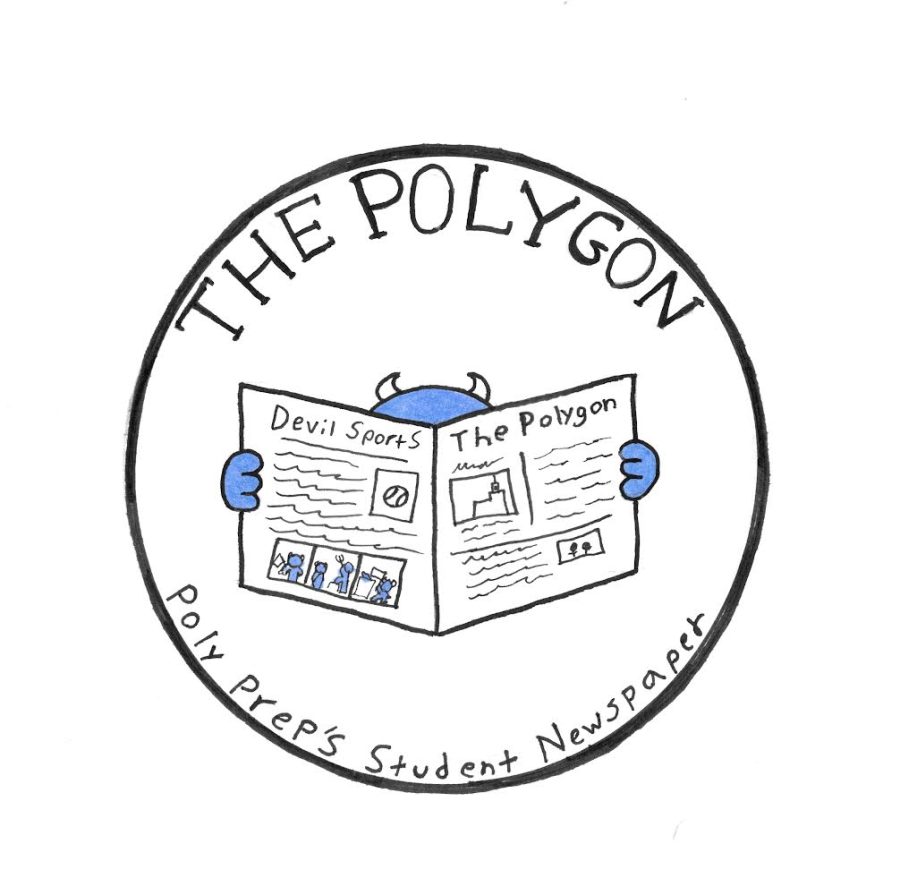Editorial: What Is the Role of the Polygon at Poly?
November 1, 2022
“Did you check out this month’s issue of the Polygon?” students ask as they travel through the hallways. Between the ever-evolving multi-million dollar campus projects and community discussions like last year’s upstander workshop administration, “news” in the lives of Poly Prep students is paramount.
Students have access to world news and information in the palm of their hands, but nowhere else can they get more community-engaged, authentic news than the Polygon. Our range of topics strives to reflect the interests of all community members; athletes, artists, and musicians come together in the communications space every club’s period to pitch story ideas encouraged by a team of their peers. Members of the community talk to each other through the Polygon; by seeing quotes from peers and faculty, we learn the opinions of people we see every day. Moreover, anyone can write letters to the editor, establishing a fluid connection between the editorial board and community members.
In the newspaper, one can connect and relate to community members and events, forming a shared interest between community members. Basic school updates sent out over email and accessible on Veracross or in the Poly Pulse are useful for standard community updates, but what about the conversation that stirs as a result of these updates? That is why we are here. No other location reflects community opinion like the Polygon.
With this idea of community, the Polygon faces the challenge of balancing the maintenance of positive relationships with faculty, staff, students, and administration with its duties as a publication. Sources are more than often used multiple times in different articles, therefore it is essential that we consider the reaction a source may have to a certain quote being published. The relationship between the Polygon and the administration is of utmost importance, as are relationships with all departments and coaches. As highlighted in the Polygon’s editorial policy, accuracy is essential: “All articles must be fact-checked by an editor, with opinion column articles fact-checked on a case-by-case basis.” Additionally, if one were to spot a factual error when reading a Polygon article, we highly encourage and emphasize the importance of alerting the editors of such an error. The Polygon edits articles after publication when needed to, typically in the form of updating the online content.
At its essence, the Polygon is the link between the student body, faculty, and administration at Poly, both in communicating news and facilitating interpersonal connections.
The administration and the Polygon, at times, may have conflicting objectives about representing Poly. According to the Poly website, at Poly “we all walk together with one goal: to be the most extraordinary version of ourselves.” Through publicized action like this digital mission statement, Poly paints itself to be the incubator of excellence and innovation.
In honest reporting, however, not everyone can always be highlighted in their most excellent and innovative state at all times. This dichotomy of interests can leave the Polygon and the greater system of Poly at odds. The Polygon, as a third-party, strives to deliver accurate news of the community, regardless of the effect the news has on Poly’s image.
Navigating any conflict between the administration and the Polygon’s responsibility to its readers to deliver accurate and reliable news is a key part of the Polygon’s role and mission. Poly, for example, may tend to avoid highlighting instances like faculty departures for a variety of reasons, however, it is still essential for students to be aware of these happenings, as they can have real consequences in their lives at school. Poly, in another example, did not outwardly promote an Instagram account that was anonymously posting allegations of gender-based harassment abuse from students at Poly last year, but it was still important that students and faculty were aware of the account because it was relevant to ongoing discussions about gender within the community, and the experience of all female students at Poly.
At its core, the Polygon is the product of endless collaboration. The more people involved in the process of creating monthly issues of the Polygon, whether offering information or opinions on the record in interviews or discussing articles in the hallways which often leads to constructive feedback, the more reflective the Polygon is of the community.
Each member of the Polygon staff, and anyone else who might contribute to the paper, has the opportunity to conjoin their ideas and expertise with those of the entire Polygon staff. Polygon pitch meetings are always raucous, with nearly everyone in attendance providing an idea to explore. Having claimed an article, each writer uses their section editor as a resource to plan out the direction of the story, the interviews or research necessary to make the story live up to Polygon standards of accuracy and depth. From there, throughout the process of researching, writing, and editing an article to the point of publication, not only does the writer morph the story into its final form, but so does the entire editorial team of the Polygon. In this way, the Polygon ensures that each piece we publish has the power and consciousness of many perspectives and ranges of experience behind it, never just one.

























